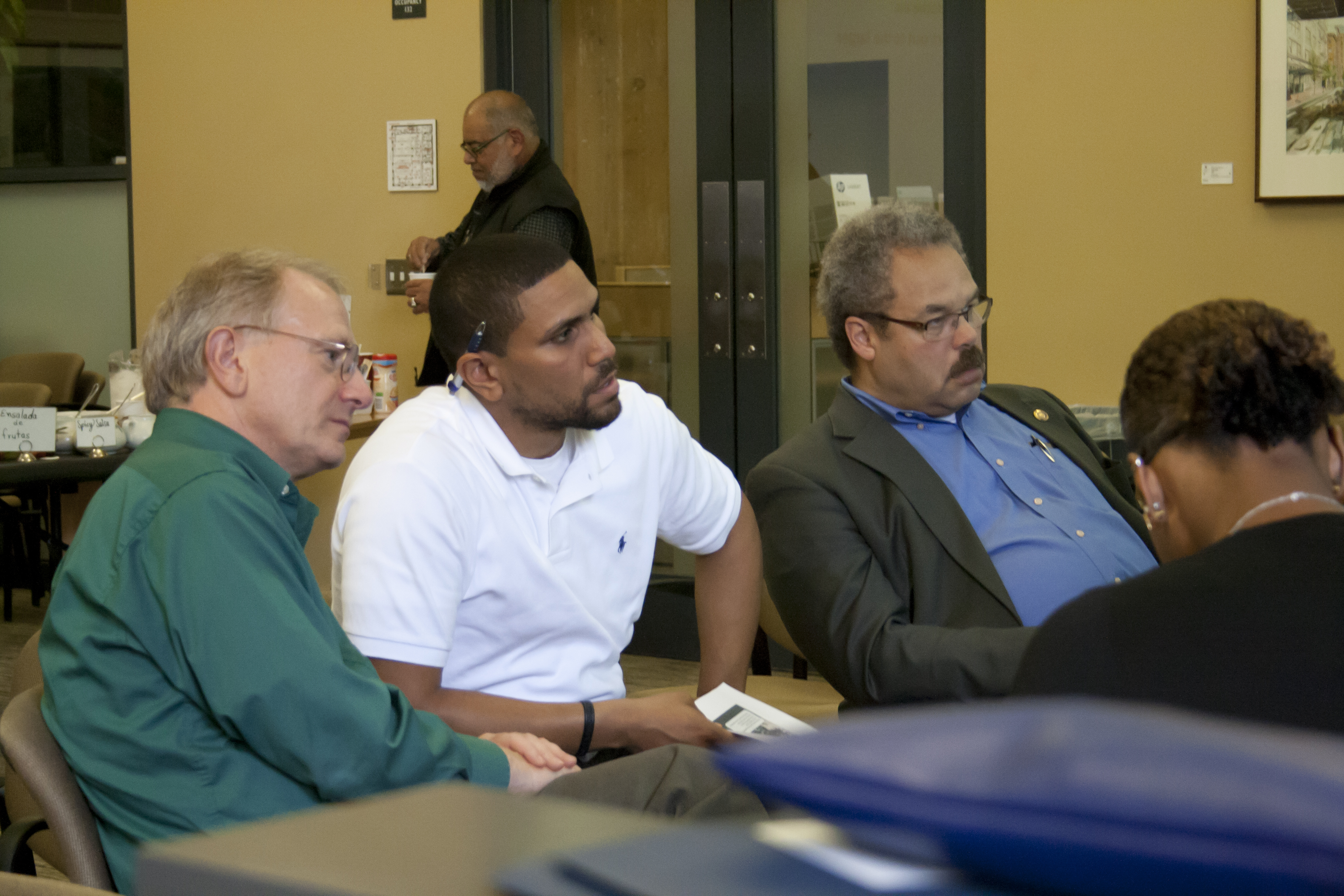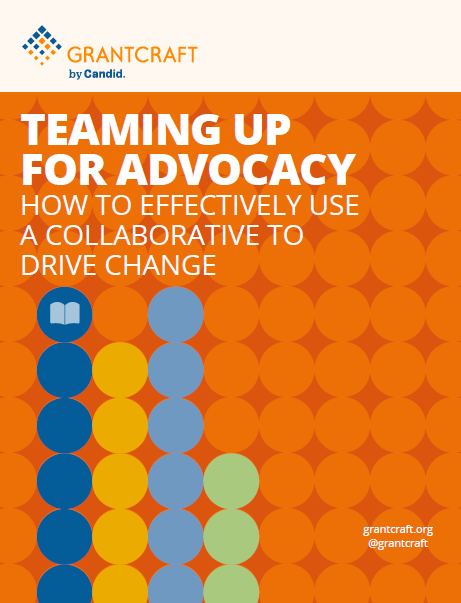Sticking Points: “My Foundation Is Nervous About Policy Advocacy”
Yes, foundations are allowed to support policy and advocacy. Yet, many still balk. 
Even in funder collaboratives that are doing advocacy work, there are sometimes members who feel like they’re “not allowed to do this,” even though they are. One collaborative working on income equity issues, for example, had an opportunity to advocate for expanding a tax credit. “We thought it was finally the moment to get foundations to step up and make calls, write letters, etc. We even did a webinar, but we got so little interest! We think it’s because the funders who are in our network tend to be senior program directors, rather than the chief person in charge. Their legal staff has warned them about boundaries but lawyers tend to have different—and sometimes incorrect—interpretations of what’s allowed. ‘This’ll never get by legal’ was a common response.”
Another grantmaker says his biggest frustration is when his collaborative is moving toward a more aggressive advocacy strategy, and a member will hide behind their foundation “by saying things like ‘I can’t because our foundation won’t go along with this.’ How do you argue with that? They’d already come with their decision made as to which proposals they weren’t going to support.” To address this, the collaborative decided to package the docket around this member’s needs, which was easy because “we had other members who were “more flexible and able to pick up the rest of what needed to be done.”
Stories From the Real World
Our criminal justice reform collaborative that was mobilizing around an upcoming Supreme Court case had advocates submit one proposal so money could get out the door quickly. Part of this grantmaking was for strategic communications that targeted the justices themselves through things like op-eds and articles. Some of our donors didn’t like this because they felt that advocating directly with justices wasn’t respecting the sanctity of court so we decided to tap members who didn’t have this problem to support that part of the strategy.
Some of our donors were skittish about advocacy so they tried to be neutral and support things like giving research data to influentials under the assumption that they’d make better policy decisions with this information. Over time, though, they started seeing that you’re not going to be able to go the distance with just the facts. You have to have strategic communications and support for organizing on the ground. To make the point, we invited some new funders with deep experience in this kind of advocacy to join the collaborative. They were very credible and persuasive about the ways in which more targeted advocacy gets results and helped shift the doubters to believers.
You have to know how to leverage all the funders’ resources in an advocacy collaborative. We had one foundation that was interested in our issue, but they’d never worked in this area before and were nervous about being perceived as too political. Also, their main reason for participating was to develop a relationship with a big foundation that was part of our collaborative. I could have challenged that motivation and risked deterring them from participating at all, but instead, I created a pu pu platter that gave them choices about what they might fund based on what they were interested in—like funding the research, rather than organizing, part of the strategy. This kind of mismatch happens all the time because donors won’t necessarily say what their motivation is to join a collaborative, so you need to give them options.
What are some of the ways that funders have addressed these issues?
- Figure out what members can support. Funders can pick off pieces of the strategy that may not be as contested in their institution and support it either in a collaborative’s pooled fund or through their own institutions. “We do this regularly when we create our strategies. We’ll say, ‘you take this state, and I’ll take this one’ or ‘you support the communications part of this, and I’ll do the grassroots organizing.’” Be aware, though, that the more sub-strategies there are, the more complex the overall strategy will be, especially if all are funded simultaneously. “You need to constantly be monitoring that there’s enough money for optimal allocation.”
- Be honest about your foundation’s limitations—up front. Stress comes from a lack of transparency or clarity on where people’s institutions are heading. “If a funder is joining a collaborative but has to pull out in two years or isn’t going to support a certain set of activities, they need to tell people that early on, even though it’s not easy to do.”
-
Have an honest conversation about risk management. There’s no question that this work can be risky because it’s unpredictable, fast-paced, and grappling with complex issues often mired in politics. It’s important for funders to be up front about this with their institutions and boards but to couple this with evidence of the collaborative’s impact, as well as a reminder that being part of a larger collective can diffuse individual institutions’ risk. At the same time, being a member of a collaborative can also help diffuse this risk, because "there's safety in numbers," as one grantmaker observes. "Individual members, as a group, minimize the risk, because the collaborative absorbs it."
-
Accept that some funders will opt out. When creating advocacy strategies, “you begin by saying ‘This is what we want to do; are you in?’ because you don’t want an outlier. We ended up with people who were uncomfortable and they left. You have to be okay with that.”
- …but provide some alternatives. Before letting donors walk out the door, explore whether there are ways to keep them involved that won’t bump up against their institutions’ policies. Some donors, for example, have their institutions’ blessing to make grants to a pooled fund, but others don’t. To get around this, one advocacy collaborative asked their intermediary to set up a structure that would give members the option of making donor-directed grants. “We also do that for funders who feel strongly that their money needs to support a particular group or groups.”
A national funder that was part of an advocacy collaborative decided it was “too advocacy focused” and announced it was pulling out. To prevent this, the group established a special fund that would allow this foundation a way to make grants that supported the work but not necessarily its direct advocacy components. “It became a companion fund to the pooled fund.”
-
Educate other funders about the importance of policy work. Besides participating in these kinds of collaboratives, funders can also use their bully pulpit to speak out more about how this work can have powerful impact. One grantmaker publishes materials and holds webinars for colleagues about how to support policy efforts and how it can leverage their investments. It also provides technical assistance and toolkits to funders and holds an advocacy institute every year.
-
Tweak the vernacular. Sometimes it’s just about the language used to describe this work. “I know one giant foundation who says ‘we don’t do advocacy,’ but they do. Sometimes it’s just about the nomenclature so it’s important to clarify.”
-
Be patient.As one funder notes, “Sometimes you just have to be patient because a lot of foundations will start out by saying they want to fund things like mentoring programs, but when they start getting into the educational policy issues behind this—like the lack of educational opportunity for some kids—they realize there are policy issues to consider as well. You have to be patient and keep giving these funders examples of the big picture.”
It is important to understand that foundations with c-3 and c-4 statuses have different rules. “You have to be really sensitive about how you’re discussing issues and strategies when you have donors in the room who aren’t c-4s.” While the laws are nuanced and different foundations and their advisors will have different interpretations and thresholds for what activities they will and won’t do, advocacy collaboratives need to agree to a shared threshold from both a philosophical and legal perspective as part of defining their strategy.
NOW REFLECT:
- How does my foundation define advocacy? Does it have a policy about supporting this work?
- Does our collaborative provide funding options for members whose institutions may not be able to support advocacy directly?
- What is our process to map out the work so that members are able to see where their institution might provide the greatest value in supporting that part of the work?
FURTHER READING:
- Stepping into the Fight: A Funder's Guide for Understanding and Supporting Legal Advocacy
- Foundations for Civic Impact: Advocacy and Civic Engagement Toolkit for Private Foundations
Please click here for information on GrantCraft’s methodology for this research.
(Photo: Portland Development Commission, licensed under CC BY-NC 2.0)


